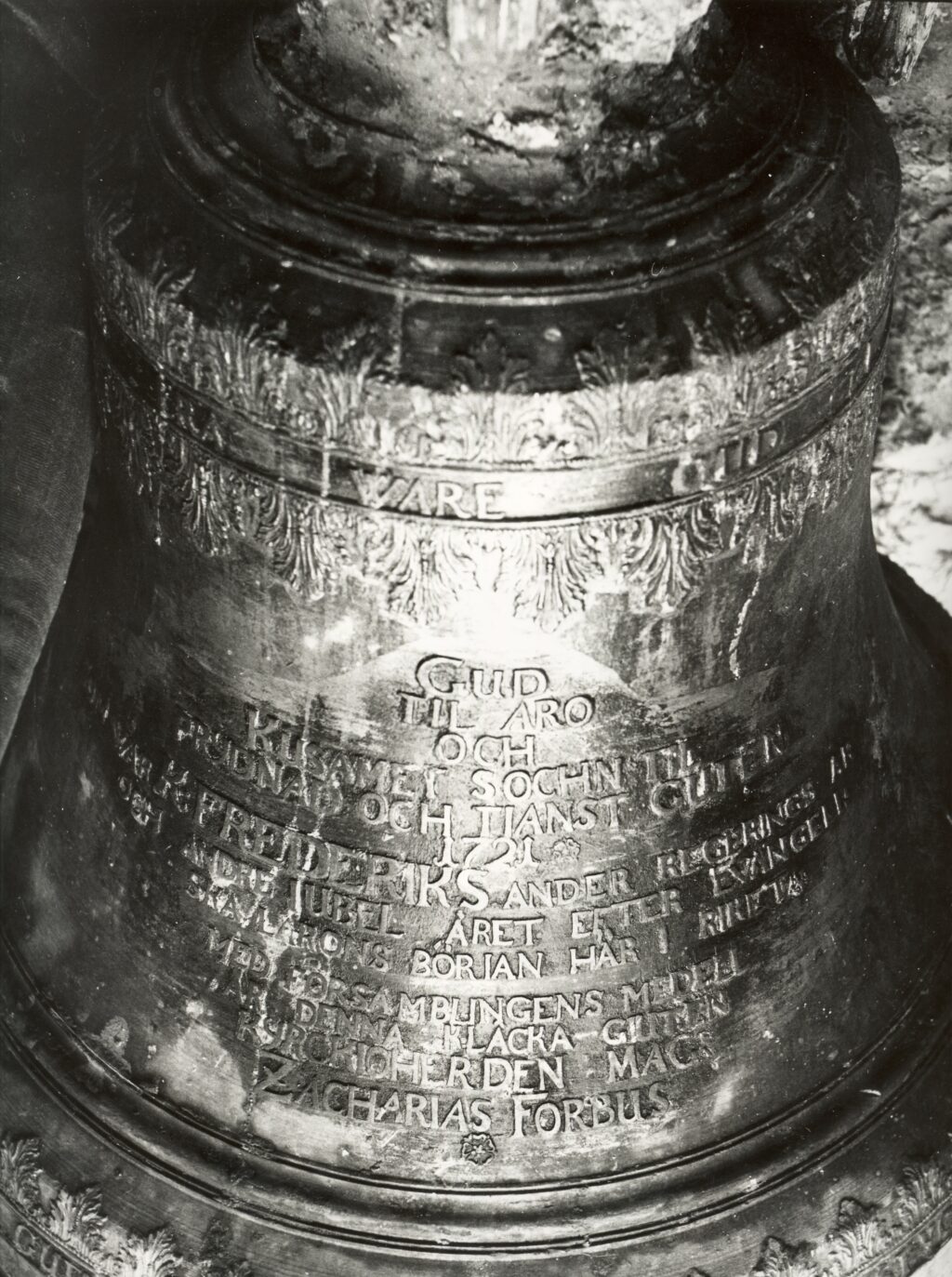According to the vicar Antti Poukkula, there is a folk tradition that King Charles XI was ill and turned to Kuusamo’s witches in his troubles. After he recovered, he donated a 525-kilogram silver-bronze church bell to the congregation. The story hardly has any basis in truth.
A smaller bell – the Priest’s or Forbus’s Bell – was bought with parish funds from Stockholm by Zacharias Forbus, who was vicar of Kuusamo in the early 18th century, after the Great Wrath in 1721. At that time, the 200th anniversary of the Reformation was also celebrated. The text written in old Swedish on the side of the bell translates to:
Glory to God in the highest and peace on earth. For the glory of God and for decoration and service to the Kuusamo parish, cast in 1721, which was the second year of King Fredrik’s reign and the second anniversary of the beginning of the evangelical faith in this kingdom. This bell has been cast with the funds of the parish on the commission of master Zacharias Forbus and the casting was performed in the foundry of the royal deceased caster Gerhardt Meyer’s widow, Katariina.
Both bells were placed in the church built in 1694, which, after falling into disrepair, were moved in 1759 to the permanent three-part belltower, which was designed by Heikki Väänänen from Ylikiimki. Kuusamo’s church bells are valuable and beautiful sounding. The bells are used to toll for the deceased people of Kuusamo – the King’s Bell for men and the Priest’s Bell for women. They are very dear to the locals. Despite Kuusamo’s border position, the bells remained free from conflicts until 1944.
